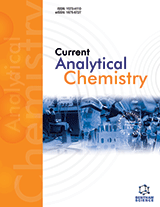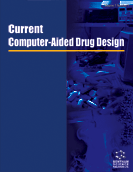Abstract
In the nonamyloidogenic processing pathway the Alzheimers amyloid precursor protein (APP) is proteolytically cleaved by α-secretase. As this cleavage occurs at the Lys16-Leu17 bond within the amyloid β domain, it prevents deposition of intact amyloidogenic peptide. In addition, the large ectodomain (sAPPα) released by the action of α-secretase has several neuroprotective properties. Studies with a range of hydroxamic acid-based compounds, such as batimastat, indicate that α-secretase is a zinc metalloproteinase, and members of the adamalysin family of proteins, TACE, ADAM10 and ADAM9, all fulfil some of the criteria required of α-secretase. APP is constitutively cleaved by α-secretase in most cell lines. However, on stimulation with muscarinic agonists or activators of protein kinase C, such as phorbol esters, the α-secretase cleavage of APP is up-regulated. The constitutive α- secretase activity is primarily at the cell surface, while the regulated activity is predominantly located within the Golgi. The beneficial action of cholinesterase inhibitors may in part be due to activation of muscarinic receptors, resulting in an up-regulation of α-secretase. Other agents can also increase the nonamyloidogenic cleavage of APP including estrogen, testosterone, various neurotransmitters and growth factors. As the α- secretase cleavage of APP both precludes the deposition of the amyloid β peptide and releases the neuroprotective sAPPα, pharmacological up-regulation of α-secretase may provide alternative therapeutic approaches for Alzheimers disease.
Keywords: alpha secretase, lys16-leu17, sappalpha
Current Medicinal Chemistry
Title: The Search for α-Secretase and its Potential as a Therapeutic Approach to Alzheimers Disease
Volume: 9 Issue: 11
Author(s): N. M. Hooper and A. J. Turner
Affiliation:
Keywords: alpha secretase, lys16-leu17, sappalpha
Abstract: In the nonamyloidogenic processing pathway the Alzheimers amyloid precursor protein (APP) is proteolytically cleaved by α-secretase. As this cleavage occurs at the Lys16-Leu17 bond within the amyloid β domain, it prevents deposition of intact amyloidogenic peptide. In addition, the large ectodomain (sAPPα) released by the action of α-secretase has several neuroprotective properties. Studies with a range of hydroxamic acid-based compounds, such as batimastat, indicate that α-secretase is a zinc metalloproteinase, and members of the adamalysin family of proteins, TACE, ADAM10 and ADAM9, all fulfil some of the criteria required of α-secretase. APP is constitutively cleaved by α-secretase in most cell lines. However, on stimulation with muscarinic agonists or activators of protein kinase C, such as phorbol esters, the α-secretase cleavage of APP is up-regulated. The constitutive α- secretase activity is primarily at the cell surface, while the regulated activity is predominantly located within the Golgi. The beneficial action of cholinesterase inhibitors may in part be due to activation of muscarinic receptors, resulting in an up-regulation of α-secretase. Other agents can also increase the nonamyloidogenic cleavage of APP including estrogen, testosterone, various neurotransmitters and growth factors. As the α- secretase cleavage of APP both precludes the deposition of the amyloid β peptide and releases the neuroprotective sAPPα, pharmacological up-regulation of α-secretase may provide alternative therapeutic approaches for Alzheimers disease.
Export Options
About this article
Cite this article as:
Hooper M. N. and Turner J. A., The Search for α-Secretase and its Potential as a Therapeutic Approach to Alzheimers Disease, Current Medicinal Chemistry 2002; 9 (11) . https://dx.doi.org/10.2174/0929867023370121
| DOI https://dx.doi.org/10.2174/0929867023370121 |
Print ISSN 0929-8673 |
| Publisher Name Bentham Science Publisher |
Online ISSN 1875-533X |
 10
10
- Author Guidelines
- Bentham Author Support Services (BASS)
- Graphical Abstracts
- Fabricating and Stating False Information
- Research Misconduct
- Post Publication Discussions and Corrections
- Publishing Ethics and Rectitude
- Increase Visibility of Your Article
- Archiving Policies
- Peer Review Workflow
- Order Your Article Before Print
- Promote Your Article
- Manuscript Transfer Facility
- Editorial Policies
- Allegations from Whistleblowers
- Announcements
Related Articles
-
Recent Insights into the Biosynthesis and Biological Activities of Natural Xanthones
Current Medicinal Chemistry Association Between Polycystic Ovary Syndrome and Metabolic Syndrome
Current Medicinal Chemistry Disorder-Specific Emotional Imagery for Differential and Quantitative Assessment of Agoraphobia
Current Pharmaceutical Design Cholinotrophic Molecular Substrates of Mild Cognitive Impairment in the Elderly
Current Alzheimer Research Acetylcholinesterase Inhibitors as a Starting Point Towards Improved Alzheimers Disease Therapeutics
Current Pharmaceutical Design Drugs Treatment of Pain in Multiple Sclerosis
Current Clinical Pharmacology Toward a Molecular Understanding of the Interaction of Dual Specificity Phosphatases with Substrates: Insights from Structure-Based Modeling and High Throughput Screening
Current Medicinal Chemistry Endotherapia
Anti-Inflammatory & Anti-Allergy Agents in Medicinal Chemistry Structures Required of Polyphenols for Inhibiting Advanced Glycation end Products Formation
Current Drug Metabolism Advanced Glycation End Products in Chinese Medicine Mediated Aging Diseases: A Review
Current Vascular Pharmacology Gabapentin for the Treatment of Cancer-Related Pain Syndromes
Reviews on Recent Clinical Trials Is the Modulation of Autophagy the Future in the Treatment of Neurodegenerative Diseases?
Current Topics in Medicinal Chemistry The Contrasting Roles of NKT Cells in Tumor Immunity
Current Molecular Medicine BOOK REVIEW of “Craving for Ecstasy and Natural Highs:A Positive Approach to Mood Alteration”by Harvey B. Milkman & Stanley G. Sunderwirth
Current Drug Abuse Reviews Role of Hexokinase and VDAC in Neurological Disorders
Current Molecular Pharmacology Synthesis of Mannich Bases by Two Different Methods and Evaluation of their Acetylcholine Esterase and Carbonic Anhydrase Inhibitory Activities
Letters in Drug Design & Discovery Genomic Linkage Between Alzheimer's Disease and Type 2 Diabetes
CNS & Neurological Disorders - Drug Targets The Quest to Repair the Damaged Spinal Cord
Recent Patents on CNS Drug Discovery (Discontinued) Clinical and Forensic Signs Related to Opioids Abuse
Current Drug Abuse Reviews The Incidence of Akathisia in the Treatment of Schizophrenia with Aripiprazole, Asenapine and Lurasidone: A Meta-Analysis
Current Neuropharmacology


























